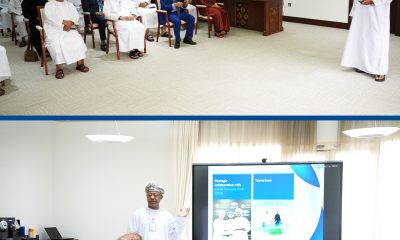Technology
Scientists Find New Evidence Of Forming Planet Resembling Saturn & Neptune

Astronomers at the Centre for Astrophysics at Harvard and Smithsonian have developed a new way to detect elusive newborn planets – and with it, new evidence was found of a small Neptune or Saturn-like planet lurking in a disk.
Astronomers agree that planets are born in protoplanetary disks – rings of dust and gas that surround young, newborn stars. While hundreds of these disks have been spotted throughout the universe, observations of actual planetary birth and formation have proved difficult within these environments.
“Directly detecting young planets is very challenging and has so far only been successful in one or two cases,” says Feng Long, a postdoctoral fellow at the Center for Astrophysics who led the new study. “The planets are always too faint for us to see because they’re embedded in thick layers of gas and dust.”
Scientists instead must hunt for clues to infer a planet is developing beneath the dust.
For her study, Long decided to re-examine a protoplanetary disk known as LkCa 15.
Located 518 light years away, the disk sits in the Taurus constellation in the sky. Scientists previously reported evidence for planet formation in the disk using observations with the ALMA Observatory.
Long dove into new high-resolution ALMA data on LkCa 15 and discovered two faint features that had not previously been detected.
About 42 astronomical units out from the star—or 42 times the distance Earth is from the Sun—Long discovered a dusty ring with two separate and bright bunches of material orbiting within it. The material took the shape of a small clump and a larger arc and was separated by 120 degrees.
Long examined the scenario with computer models to figure out what was causing the buildup of material and learned that their size and locations matched the model for the presence of a planet.
The results show the planet is roughly the size of Neptune or Saturn, and around one to three million years old, which is considered young for a planet.
Directly imaging the small, newborn planet may not be possible any time soon due to technology constraints, but Long believes further ALMA observations of the planet can provide additional evidence supporting her planetary discovery.
-

 Magazines2 months ago
Magazines2 months agoOER – September 2025 Issue
-

 Alamaliktistaad Magazines2 months ago
Alamaliktistaad Magazines2 months agoAlam Al Iktisaad – September 2025 Edition
-

 News2 months ago
News2 months agoKitchenomiKs Secures Investment of US$3.2M Led by Jasoor Ventures
-

 News2 months ago
News2 months agoCent Capital, AI Finance App by ex-AWS Strategist ‘The Beast of Bay Area,’ Launches to End Financial Anxiety, Hits $1M AUM
-

 News2 months ago
News2 months agoOman Inaugurates ‘Hadatha’ – Its All-New Cybersecurity Center
-

 Banking & Finance2 months ago
Banking & Finance2 months agoOman Arab Bank Highlights Its Ongoing Strategic Initiatives and Future Plans
-

 News2 months ago
News2 months agoIEA Expects Global Oil Market to Remain Oversupplied in 2026
-

 Energy2 months ago
Energy2 months agoWLGA Middle East LPG Summit & Expo 2025 to be held at OCEC on November 10 and 11






























